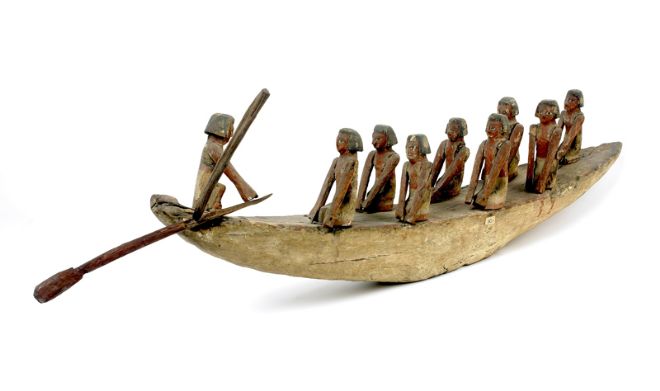This resource is part of the Museum Snapshot collection - a collection of smaller resources perfect for starters, plenaries or spare moments to explore something fascinating.
Resource created by Hull Museums
National Curriculum Links
- History KS1: Ancient Egypt
Learning Outcomes
- To identify connections between current cultures and ancient cultures (beliefs – the afterlife)
- To demonstrate understanding of the concept of civilization
This wooden funerary boat was part of a group recovered from the coffin of a courtier to the Pharaoh, and dates back 4,000 years to 1990 BCE. Funerary boats such as these were placed in graves in the Middle Kingdom period of Egypt to help transport the deceased in the afterlife. The model has four pairs of oarsmen (missing their oars) and a single figure in the stern holding a steering oar. Although the precise details are not known, it is believed that the boat was excavated by John Garstang between 1902-1904 from Beni Hasan in Egypt.
The wooden funerary boat model found its way into the private collection of Albert Reckitt of Reckitt and Sons Ltd., one of Hull's largest established companies. Some years later, probably in the mid-1930s, Reckitt donated the boat to Hull Museums where it seems to have been displayed at the Museum of Fisheries and Shipping at Pickering Park.
Discussion Ideas
- Why do you think the symbol of a boat was used in a ritual to do with the afterlife?
- What other forms of transport were there 4000 years ago?
- Why do you think boats were the symbolic form of transport compared with others?
- We use different kinds of transport for funerals today, what different ones can you think of, and what do they reflect?

